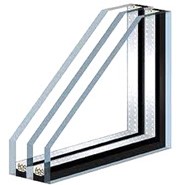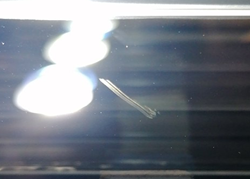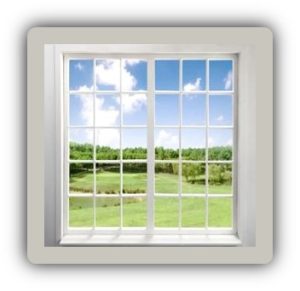 The insulted glass unit is a product used in construction and architecture. It is a structural element consisting of two or more sheets of glass, between which there is a hermetically filled air or special insulating gas gap.
The insulted glass unit is a product used in construction and architecture. It is a structural element consisting of two or more sheets of glass, between which there is a hermetically filled air or special insulating gas gap.1. Insulation: Insulated glass units are excellent heat and sound insulators.
2. Security: Insulated glass units work as security elements.
3. Structural strength: Glass units can contribute to the structural strength of a building. They can be integrated into the window frame or facade system to increase the stability of the entire building.
4. Aesthetics: Insulated glass units give the building a modern and stylish look.
During the production process of the entire glass unit, many events occur that can cause defects.
What can be the defects and their origin?
Can all discrepancies really affect the performance of the glass unit?
Can all discrepancies really affect the performance of the glass unit?
Everyone’s opinion about defects is different, that’s why all non-conformities of glass units are described in the company’s quality control standard. This is very important, because the irregularity in the glass unit is not always classified as a defect. Sometimes a customer may think that a small scratch affects the quality and performance of the glass, but this is not always true. Therefore, to define “true” defects, we have regulations that guide us in determining the quality of glass units.
Defects that occur in production:
 Impurities inside – is a “TOP” defect. Occurs on both: glass panes and spacers. This is mostly dust, glove marks from manually assembled spacer on glass pane, can appear residues of sealants, which leave black marks. Often, customers order glass units of non-standard sizes or shapes, which insulated glass unit’s line cannot produce. Such glass units are produced manually, so various impurities may appear at this stage of production.
Impurities inside – is a “TOP” defect. Occurs on both: glass panes and spacers. This is mostly dust, glove marks from manually assembled spacer on glass pane, can appear residues of sealants, which leave black marks. Often, customers order glass units of non-standard sizes or shapes, which insulated glass unit’s line cannot produce. Such glass units are produced manually, so various impurities may appear at this stage of production.Scratches sometimes appear – these are minimal defects in the glass unit that do not affect heat transfer or other insulating properties of the glass unit. Insulated glass units with minimal defects can successfully perform their functions for many years. Scratches are caused by mechanical (human or equipment) “touches” with the glass pane. Since these scratches are very small, in most cases it is not treated as a defect. They are barely visible and allowed by quality assurance standards, as they often do not even influence the aesthetic view. Since the glass units “go through” quite a long way to the customer, more visible, larger scratches can appear at each stage of production. Such scratches will look unaesthetically, that’s why units with these scratches are produced anew as soon as a defect is noticed, and customers receive a quality product that they can enjoy for many years.
Bended or misaligned spacers in single, double, or triple glazing, caused by assembling them at different heights. This is only noticeable when the glass unit is already produced. If such a defect is very minimal, it does not change the properties of the glass unit and is not classified as a defect. Such minimal “defects” are permitted under quality assurance standards.

Imperfect glass raw material. This is one of the defects that depends on the quality of the glass from our suppliers. It happens that we get low-quality raw glass: from laminated impurities or tempered spots to bubbles in the glass mass. The glass bubble – sounds nice, but in the production of insulated glass units, it sometimes happens that it does not fit to the norms. But bubbles in glass are not always classified as defects, because in most cases they are very small, barely visible and do not cause an aesthetic deviation of the view. Numbers of small glass defects may appear in the glass production process. For example, dust or air bubbles are mixed. This cannot be avoided because glass production is a large industry with defects that are not immediately noticeable.
As most of the incoming glass is large „Jumbo“ sheets with a single size of 19.26 m2, it is inescapable that there will be acceptable imperfections. If customers wanted the glass units to be completely defect-free, the manufacturer would have to slow down the production speed, which would lengthen the entire production process, and then the customer would have to wait much longer for their product. Due to longer production time and high costs, the price of glass raw material would also increase, which would also affect the price of glass units. Therefore, in order to evaluate the quality of products, certain defect indicators are established in order to define as precisely as possible what is suitable for use and what is not, thus preserving the price-quality ratio.
All employees of the company participate in all stages of production – from incoming raw goods to the production of the glass unit. The quality of the glass unit is the responsibility of all of us. We strive to provide our customers with high quality product that will not cause any problems and will allow to enjoy the view from the window for many years. However, as with all industries, glass sometimes has acceptable imperfections.
As most of the incoming glass is large „Jumbo“ sheets with a single size of 19.26 m2, it is inescapable that there will be acceptable imperfections. If customers wanted the glass units to be completely defect-free, the manufacturer would have to slow down the production speed, which would lengthen the entire production process, and then the customer would have to wait much longer for their product. Due to longer production time and high costs, the price of glass raw material would also increase, which would also affect the price of glass units. Therefore, in order to evaluate the quality of products, certain defect indicators are established in order to define as precisely as possible what is suitable for use and what is not, thus preserving the price-quality ratio.
All employees of the company participate in all stages of production – from incoming raw goods to the production of the glass unit. The quality of the glass unit is the responsibility of all of us. We strive to provide our customers with high quality product that will not cause any problems and will allow to enjoy the view from the window for many years. However, as with all industries, glass sometimes has acceptable imperfections.

